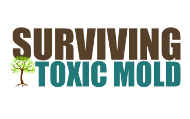How Toxic Molds are used in "Top-Secret" BioChemical Warfare as "Agents of Death"
This is the part of toxic mold that none of us want to read about. It's the part that affected my family, so closely that it's even hard to write about. As hard as this article is to write, it's dedicated to my father who was a victim of BioChemical Warfare (Specifically, Agent-Orange) in Vietnam.
It wasn't until my horrendous toxic mold exposure in 2011 (You can read my full story HERE), that I came across tremendous amounts of research and proof that in fact, toxic molds were used in the production of some of these agents that were dispersed in war-time, and specifically where my Dad spent the bulk of his time in Vietnam.
Rainbow Herbicides during War
Of the agents used in southeast Asia, their active ingredients and years used were as follow:[3]
- Agent Green: 100% n-butyl ester 2,4,5-T, used prior to 1963[2]
- Agent Pink: 100% 2,4,5-T (60% n-butyl ester 2,4,5-T, and 40% iso-butyl ester of 2,4,5-T) used prior to 1964[2]
- Agent Purple: 50% 2,4,5-T (30% n-butyl ester of 2,4,5-T, and 20% iso-butyl ester of 2,4,5-T) and 50% n-butyl ester of 2,4-D used 1961–65
- Agent Blue (Phytar 560G): 65.6% organic arsenicical (cacodylic acid (Ansar 138) and its sodium salt sodium cacodylate)[2] used from 1962 to 1971 in powder and water solution[4]
- Agent White (Tordon 101): 21.2% (acid weight basis) triisopropanolamine salts of 2,4-D and 5.7% picloram used 1966–71[2][4]
- Agent Orange or Herbicide Orange, (HO): 50% n-butyl ester 2,4-D and 50% n-butyl ester 2,4,5-T used 1965–70
- Agent Orange II:50% n-butyl ester 2,4-D and 50% isooctyl ester 2,4,5-T used after 1968.[5][6]
- Agent Orange III: 66.6% n-butyl 2,4-D and 33.3% n-butyl ester 2,4,5-T.[7]
- Enhanced Agent Orange, Orange Plus, or Super Orange (SO), or Doe Herbicide M-3393: standardized Agent Orange mixture of 2,4-D and 2,4,5-T combined with an oil-based mixture of picloram, a proprietary Dow Chemical Company product called Tordon 101, an ingredient of Agent White.[8][9]
|





